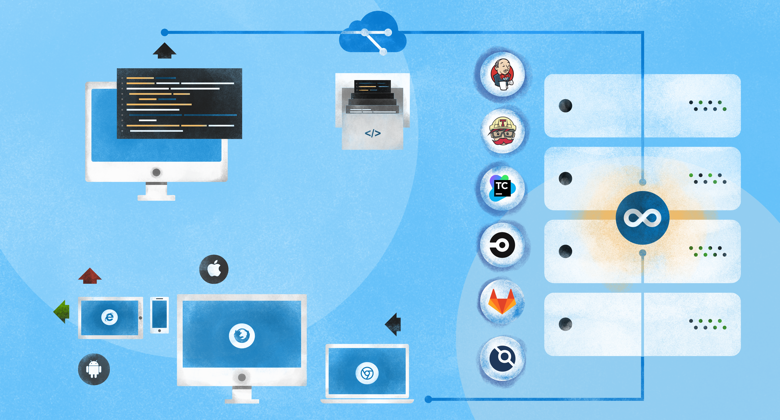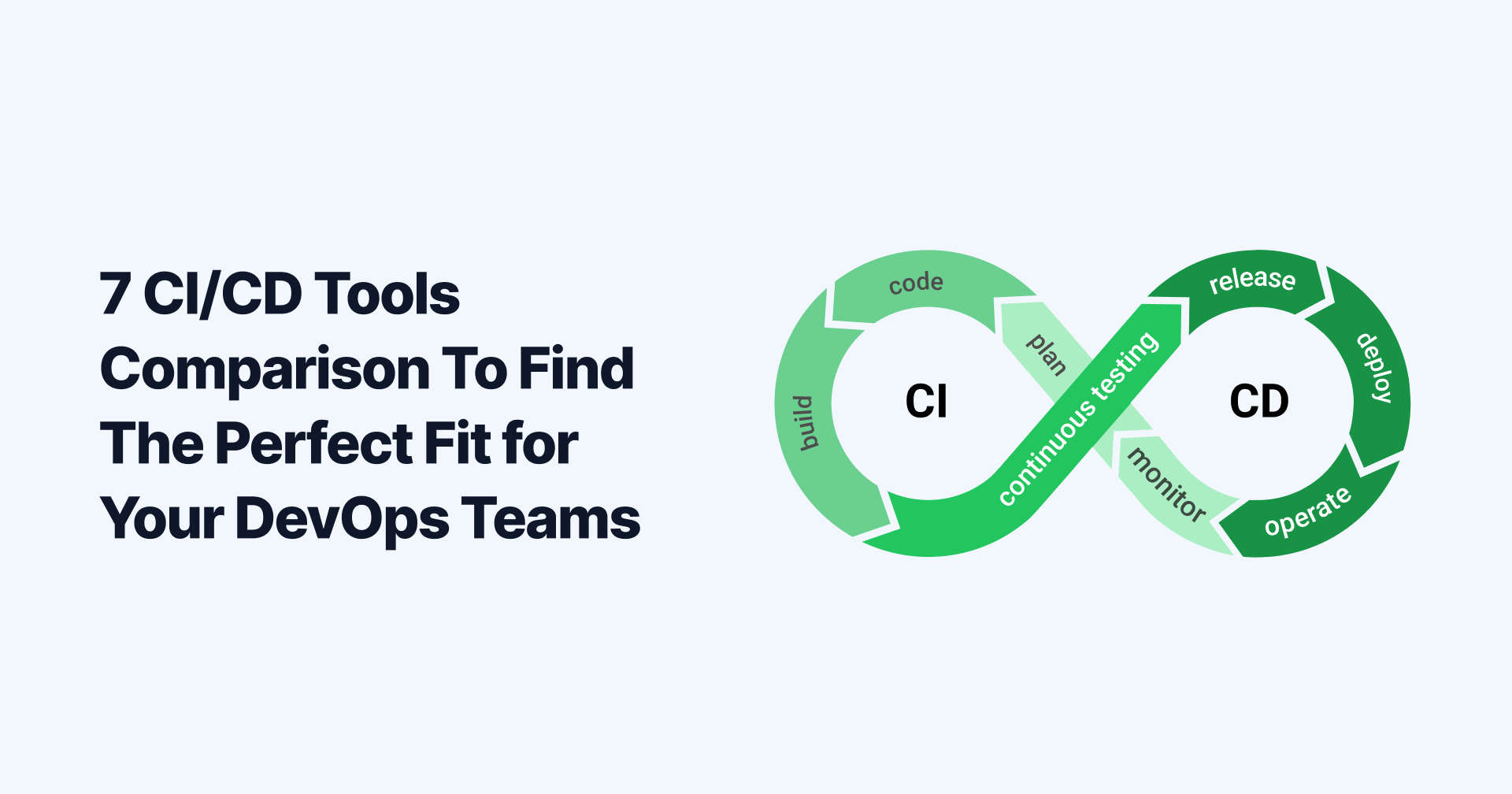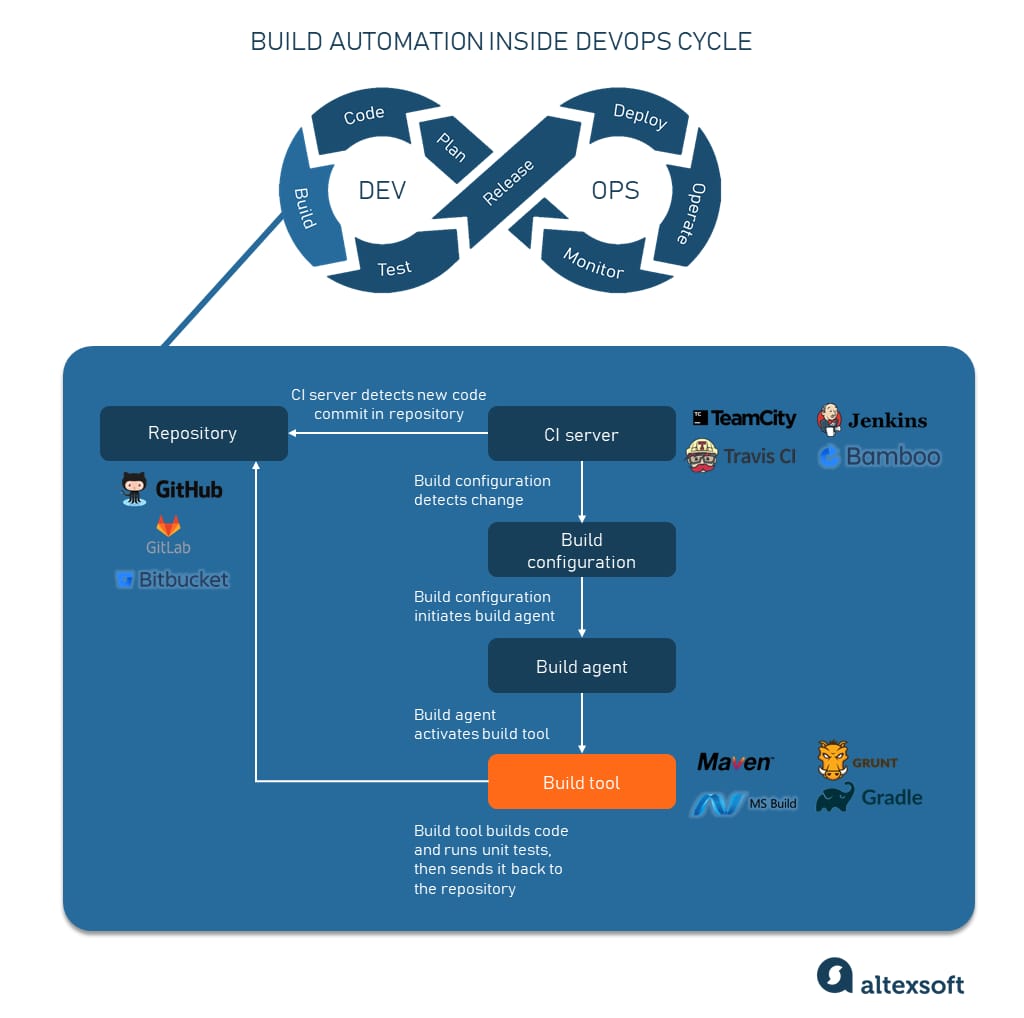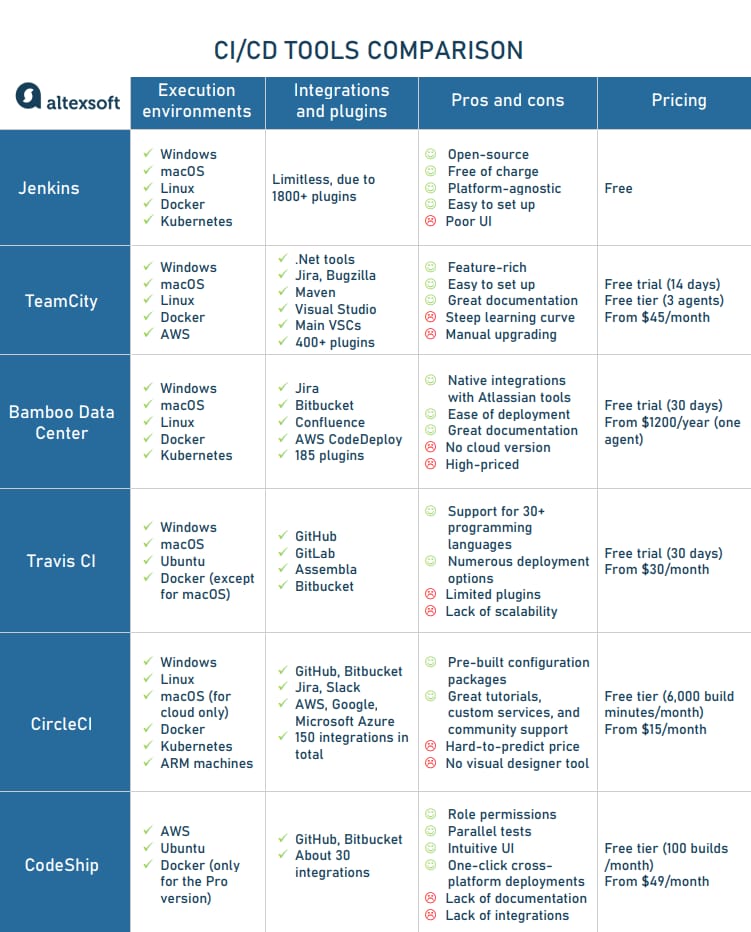Are you tired of feeling overwhelmed by the endless choices of CI/CD pipeline tools out there? Do you want to streamline your development process but aren’t sure which tool is right for you?
You’re not alone. The world of continuous integration and continuous deployment can seem daunting, but picking the right tools can transform your workflow, boost productivity, and give you a competitive edge. Imagine a development process where your code is seamlessly integrated, automatically tested, and effortlessly deployed.
It sounds like a dream, but with the right CI/CD tools, it can be your reality. But how do you decide which tool best fits your needs? Each one has its unique features, strengths, and weaknesses. We’ll break down the top CI/CD pipeline tools, comparing their features, usability, and pricing. You’ll gain the insights you need to make an informed decision and choose the perfect tool to elevate your development process. Dive in to discover which CI/CD pipeline tool will be your new best friend in coding.

Ci/cd Pipeline Basics
Ci/Cd pipelines are crucial in DevOps. They help teams work faster. Automating tests saves time. It also reduces errors. This means better software. Developers can focus on coding. They don’t need to worry about deployment. This makes work easier and more fun. It also improves software quality. Customers get updates quickly. Everyone wins.
A Ci/Cd pipeline has many parts. Source control is one. It stores code safely. Then, there is build automation. This turns code into products. Next is testing. It checks for mistakes. After that comes deployment. This sends the product to users. Monitoring is the last step. It watches for problems. These parts work together. They create a smooth process. Each part is important.

Popular Ci/cd Tools
Jenkins is a widely used open-source automation tool. It helps in building, testing, and deploying code. Many developers like Jenkins because it is very flexible. It has many plugins to help with different tasks. Jenkins works with many programming languages. It is great for both small and big projects.
CircleCI is a popular cloud-based tool. It is easy to use and set up. CircleCI supports fast integration and delivery. It works well with GitHub and Bitbucket. Many companies use CircleCI for its speed and reliability. It can run many tasks in parallel.
GitLab CI/CD is part of GitLab. It helps in managing code repositories. This tool supports continuous integration and continuous delivery. GitLab CI/CD works well with Docker and Kubernetes. It provides a complete DevOps platform. Many teams prefer it for its integration capabilities.
Travis CI is another cloud-based tool. It is simple and easy to use. Travis CI integrates smoothly with GitHub. It is great for open-source projects. Travis CI runs tests automatically. Many developers like its user-friendly interface. It supports many different languages.
Tool Features And Benefits
Each tool must handle many projects at once. Some tools scale better than others. Choose tools that grow with your needs. Flexibility is key. Adjust settings easily. Add features as needed. The right tool fits different situations. Make sure it adapts to change.
Tools should work well with other systems. Smooth integration saves time. No one wants a tool that is hard to set up. A good tool connects to existing software easily. It supports different platforms. Look for tools with simple setup guides. This helps in getting started quickly.
Some tools support many development environments. They work with Windows, Mac, and Linux. This flexibility is crucial. Developers use different systems. A good tool supports all of them. Make sure it works with your current setup. This avoids problems down the line.
Performance And Reliability
Choosing the right CI/CD pipeline tool enhances performance and ensures reliability. These tools streamline software development, minimizing errors and downtime. Compare features to find the best fit for efficient workflows.
Speed Of Deployment
Deployment speed matters a lot in Ci/Cd pipelines. Fast tools save time. Some tools deploy updates in seconds. Others take minutes. Choose tools that fit your team size. Large teams need faster tools. Small teams might be okay with slower ones. Look for tools that handle big loads well. High speed must not reduce quality.
Error Handling Capabilities
Errors happen often in pipelines. Good tools handle errors smoothly. Look for tools with strong error detection. These tools spot issues quickly. Fixing errors should be easy. Some tools give helpful error messages. Others may just show simple alerts. Choose tools with clear instructions for fixing errors. Reliable error handling keeps projects on track.
Cost Analysis
Choosing between free and paid tools can be tricky. Free tools often have limited features. They might be perfect for small projects. But paid tools offer advanced options. These tools are suitable for big projects. Paid tools usually have better support. Free tools may lack customer help.
Paid tools can be expensive but offer good value for money. They provide reliable service. Free tools save money but may have hidden costs. For example, time spent on troubleshooting. Assess project needs before choosing. This helps in making a wise choice.
User Experience
The interface must be easy to use. Simple designs help users understand fast. Buttons and options need clear labels. Colors should not be too bright. They should be easy on the eyes. Layouts must be neat and tidy. This helps users find things quickly. Text should be big enough to read. Every part should be easy to reach. This makes tasks quicker.
Good community support helps users a lot. People share tips and solutions. It is easy to find help when needed. Forums and groups are useful. Users can ask questions there. Active communities mean users can get answers fast. Many users help each other. They share their experiences. This makes tools better for everyone.
Security Considerations
Evaluating security considerations in CI/CD pipeline tools is essential. Each tool offers different levels of protection against threats. Understand the security features to ensure safe software delivery.
Data Protection
Data must stay safe in Ci/Cd pipelines. Encryption keeps data secret. It protects against unauthorized access. Tools should use strong encryption methods. Secure backups are vital. They guard against data loss. Regular backups keep information safe.
Access Controls
Access controls limit who sees data. They prevent misuse. User roles define permissions. Only trusted users should have access. Tools should support multi-factor authentication. This adds an extra security step. It helps protect valuable information.
Future Trends In Ci/cd
AI in Ci/Cd helps automate tasks. It can predict errors quickly. This saves time and effort. Developers find bugs faster. AI makes testing smarter. It learns from past mistakes. Smart tools reduce human work. Teams can focus on creativity. AI keeps improving itself. It adapts to new challenges. Companies use AI for better results. Future tools will be more intelligent. Everyone will benefit from AI integration.
Automation speeds up the Ci/Cd process. Tasks happen without manual work. Scripts control the steps. They ensure nothing is missed. Changes are tracked automatically. Teams see updates in real-time. This makes collaboration easy. Mistakes are fixed quickly. Automation tools are simple to use. They reduce errors and save time. Future tools will be even more efficient. Developers will enjoy smoother workflows. Automation enhances productivity greatly.

Frequently Asked Questions
What Is A Ci/cd Pipeline Tool?
A CI/CD pipeline tool automates software development processes. It integrates code changes, tests them, and deploys applications efficiently. These tools enhance collaboration and reduce manual errors. Popular options include Jenkins, GitLab, and CircleCI. They help in streamlining workflows and speeding up delivery cycles.
How Do Ci/cd Tools Work?
CI/CD tools automate code integration and deployment. They monitor repositories for changes, trigger builds, and run tests. After successful testing, they deploy updates to production environments. This ensures consistent and error-free releases, improving software quality and reducing time to market.
Which Ci/cd Tools Are Most Popular?
Popular CI/CD tools include Jenkins, GitLab, and Travis CI. Jenkins is widely used for its flexibility and plugin support. GitLab offers integrated CI/CD features within its platform. Travis CI is known for its ease of use and cloud-based builds, making it ideal for open source projects.
Are Ci/cd Tools Expensive?
Many CI/CD tools offer free versions with basic features. Jenkins is open-source, providing cost-effective solutions for small teams. GitLab offers tiered pricing, catering to various business needs. Overall, costs depend on the tool’s features and the scale of implementation, but affordable options are available.
Conclusion
Choosing the right CI/CD pipeline tool is crucial. Each tool offers unique features. Consider your team’s needs and skills. Evaluate integration capabilities carefully. Check for community support and documentation. Think about scalability and future growth. Compare costs and long-term benefits.
Prioritize security and compliance features. Test tools in a real-world environment. Gather feedback from your team. Make informed decisions to enhance productivity. Successful implementation boosts efficiency and reduces errors. Stay updated with tool improvements. Adapt your pipeline as technology evolves.
A well-chosen tool can streamline development.
Read More:
- Network Automation Tools ROI: Boosting Efficiency & Savings
- Noise‑Cancelling Earbuds Battery Life: Maximize Your Usage
- Serverless Vs Containerized Workloads: A Comparative Guide
- Vr Content Creation Tools 2025: Revolutionize Your Creations
- Best Gaming PC Build under $1500: Ultimate Performance
- Best Cross‑Platform Mobile Frameworks 2025: Top Picks
- Javascript Frameworks Benchmark 2025: Speed & Performance
- Quantum Cryptography Implementation Challenges: Unveiling Complexities

